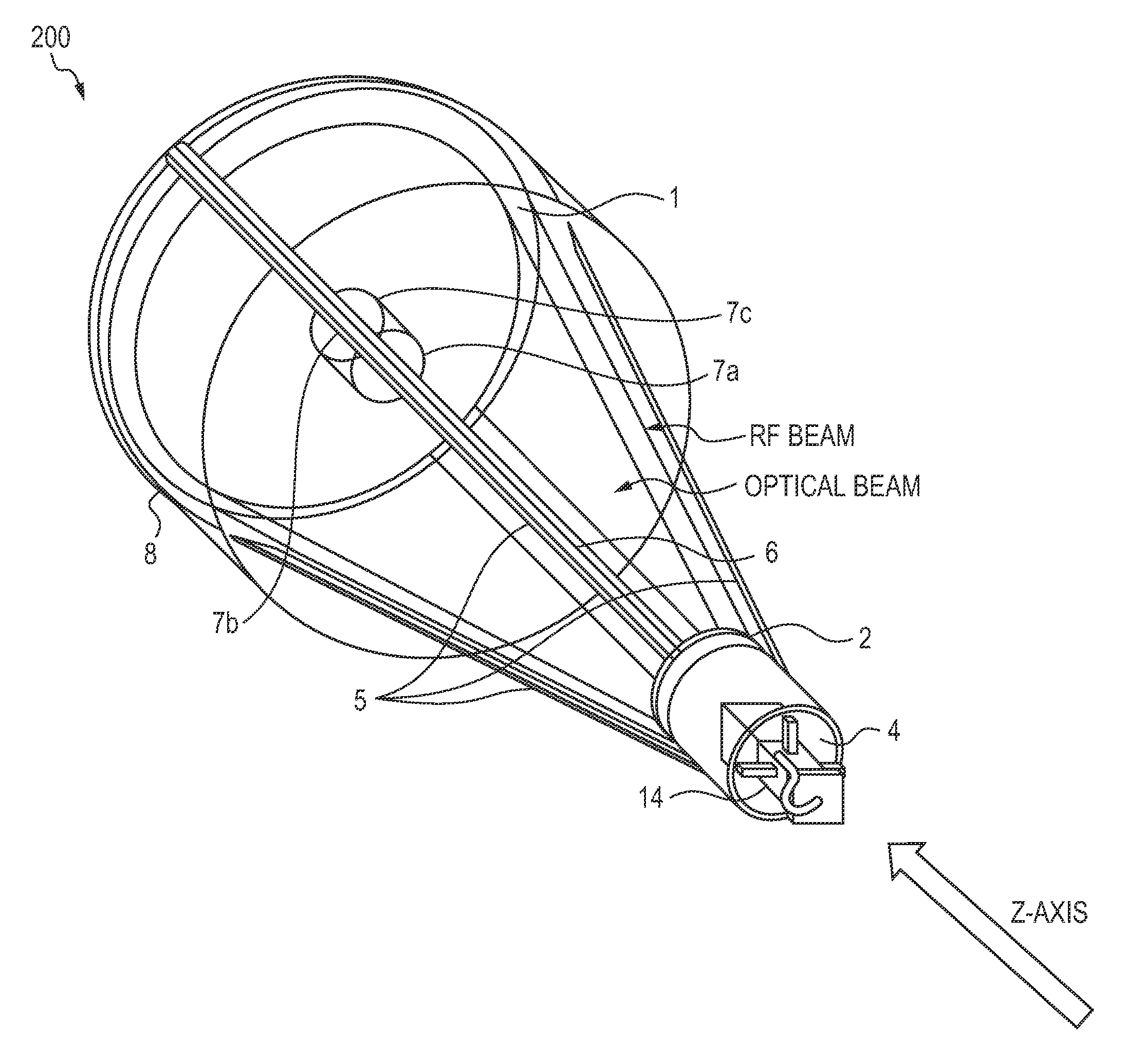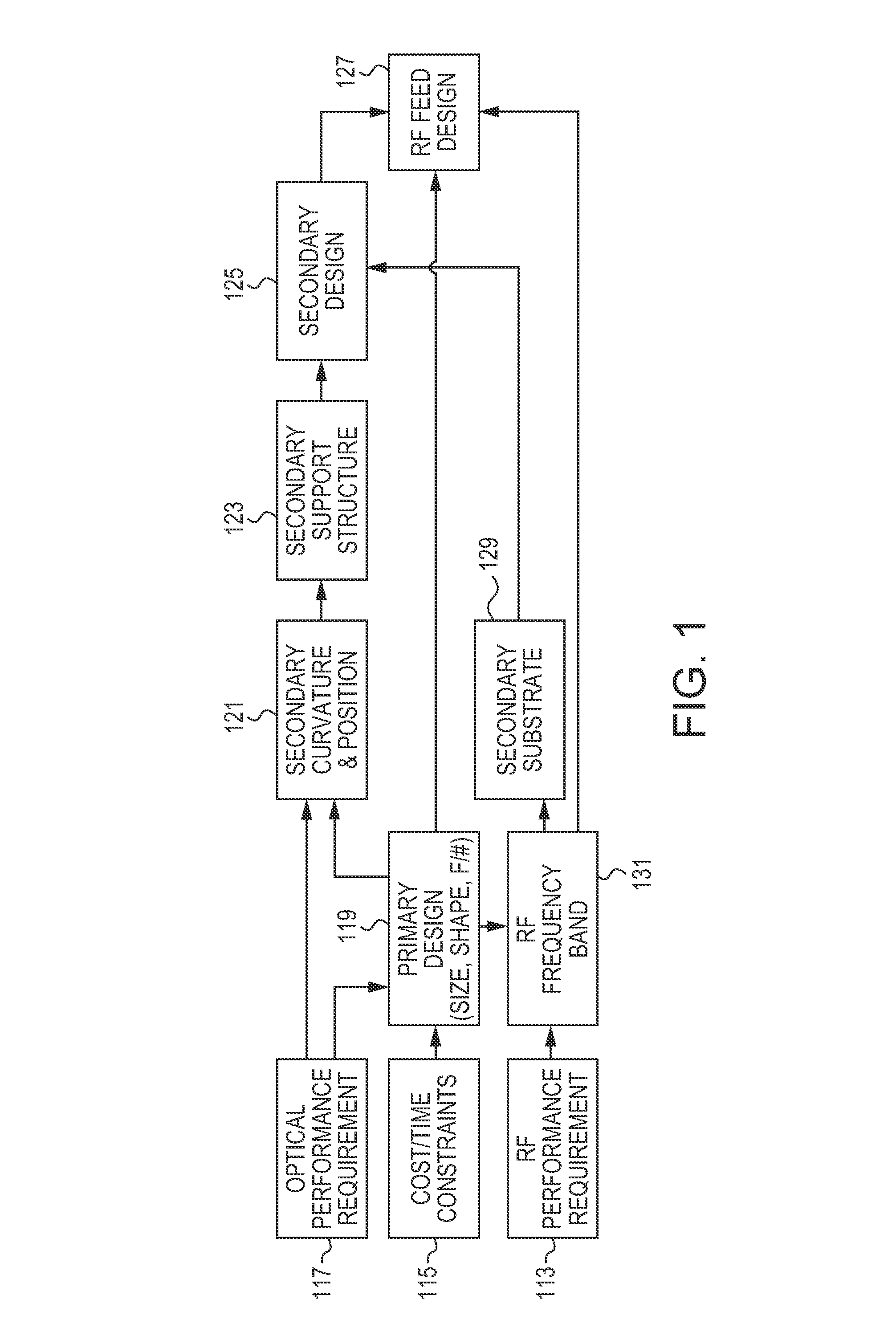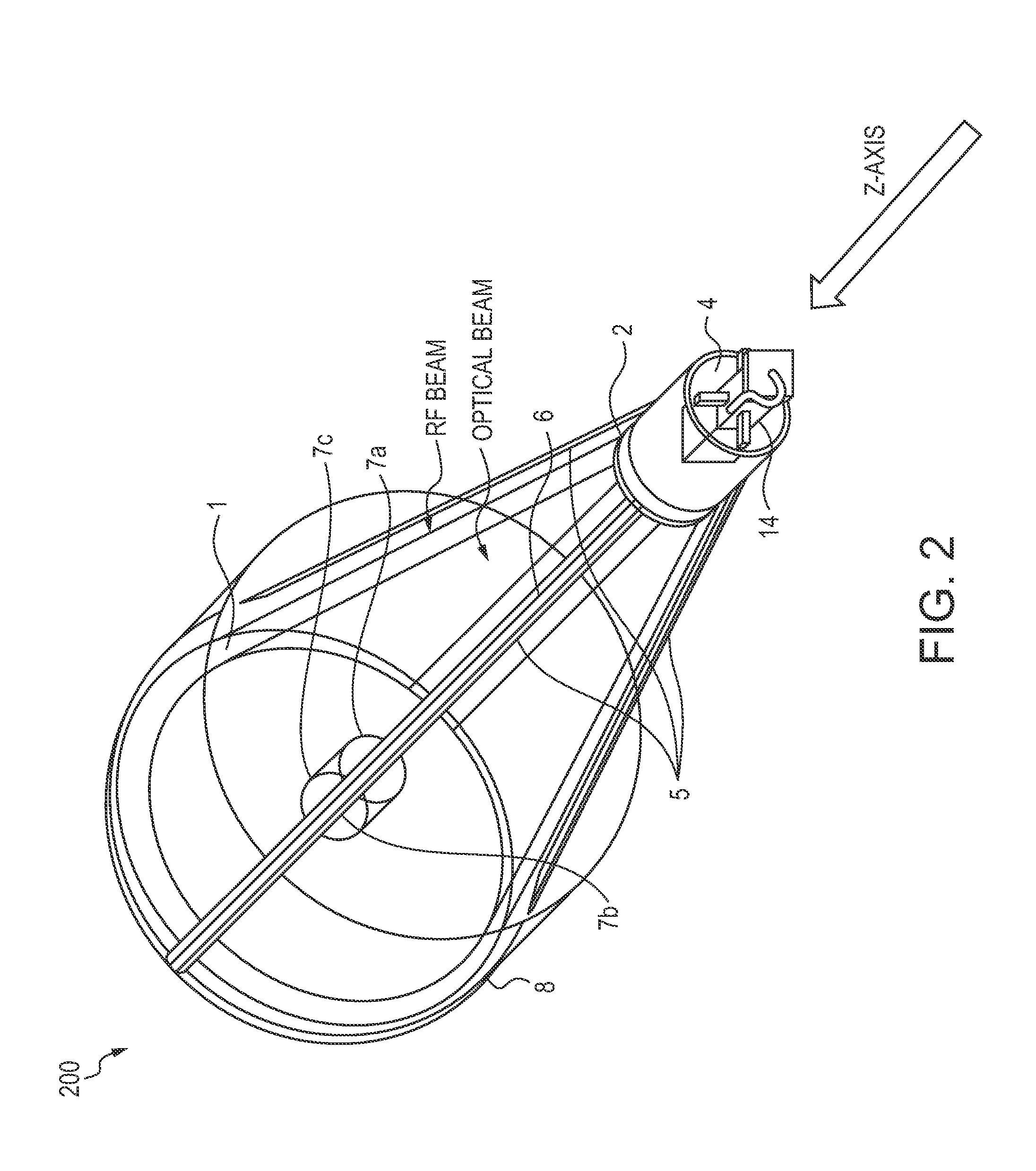Dual band radio frequency (RF) and optical communications antenna and terminal design methodology and implementation
a dual-band radio frequency and optical communication technology, applied in the direction of antennas, simultaneous aerial operations, electrical apparatus, etc., can solve the problems of inapplicability of optical link availability, in rf terms, cassegrain layouts at microwave frequencies such as such relatively small apertures, and achieve link robustness and enhanced system capabilities
- Summary
- Abstract
- Description
- Claims
- Application Information
AI Technical Summary
Benefits of technology
Problems solved by technology
Method used
Image
Examples
Embodiment Construction
1. Introduction
[0019]In the following discussion, numerous specific details are set forth to provide a thorough understanding of the present invention. However, those skilled in the art will appreciate that the present invention may be practiced without such specific details. In other instances, well-known elements have been illustrated in schematic or block diagram form in order not to obscure the present invention in unnecessary detail. Additionally, for the most part, details concerning network communications, electromagnetic signaling techniques, and the like, have been omitted inasmuch as such details are not considered necessary to obtain a complete understanding of the present invention and are considered to be within the understanding of persons of ordinary skill in the relevant art.
2. Overview
[0020]The combination of both optical and RF communications bands into a single optimized, compact system design aperture realizes a highly capable and efficient communications termina...
PUM
 Login to View More
Login to View More Abstract
Description
Claims
Application Information
 Login to View More
Login to View More - R&D
- Intellectual Property
- Life Sciences
- Materials
- Tech Scout
- Unparalleled Data Quality
- Higher Quality Content
- 60% Fewer Hallucinations
Browse by: Latest US Patents, China's latest patents, Technical Efficacy Thesaurus, Application Domain, Technology Topic, Popular Technical Reports.
© 2025 PatSnap. All rights reserved.Legal|Privacy policy|Modern Slavery Act Transparency Statement|Sitemap|About US| Contact US: help@patsnap.com



